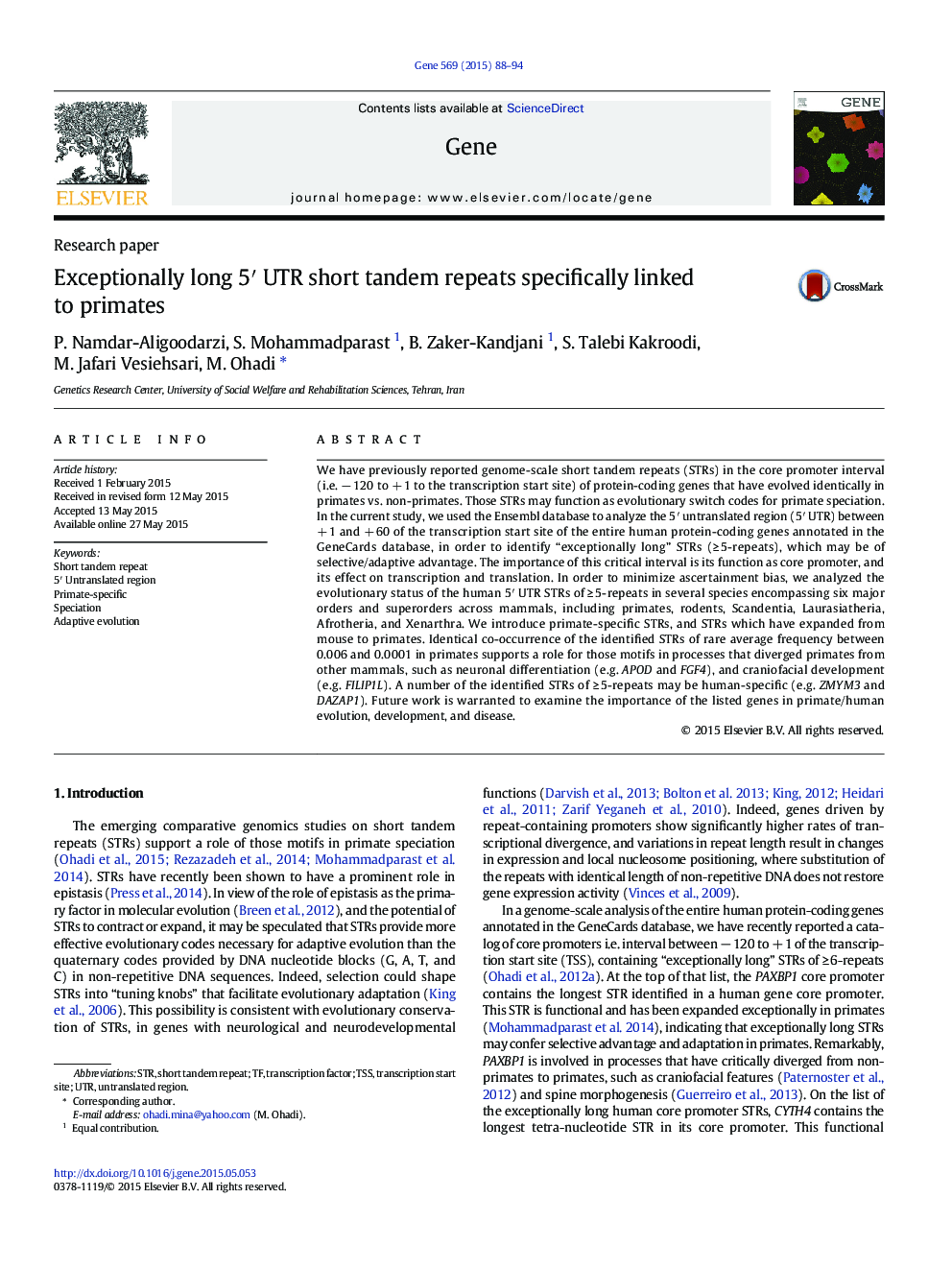| کد مقاله | کد نشریه | سال انتشار | مقاله انگلیسی | نسخه تمام متن |
|---|---|---|---|---|
| 2815564 | 1159878 | 2015 | 7 صفحه PDF | دانلود رایگان |

• Genome-scale distribution of different STR motifs and lengths across human 5′ UTRs
• Genome-scale identification of exceptionally long human 5′ UTR STRs
• Identification of exceptionally long 5′ UTR STRs that specifically link to primates
• Identification of exceptionally long 5′ UTR STRs that link to human
• Proposed role of the primate- and human-specific 5′ UTR STRs in adaptive evolution
We have previously reported genome-scale short tandem repeats (STRs) in the core promoter interval (i.e. − 120 to + 1 to the transcription start site) of protein-coding genes that have evolved identically in primates vs. non-primates. Those STRs may function as evolutionary switch codes for primate speciation. In the current study, we used the Ensembl database to analyze the 5′ untranslated region (5′ UTR) between + 1 and + 60 of the transcription start site of the entire human protein-coding genes annotated in the GeneCards database, in order to identify “exceptionally long” STRs (≥ 5-repeats), which may be of selective/adaptive advantage. The importance of this critical interval is its function as core promoter, and its effect on transcription and translation. In order to minimize ascertainment bias, we analyzed the evolutionary status of the human 5′ UTR STRs of ≥ 5-repeats in several species encompassing six major orders and superorders across mammals, including primates, rodents, Scandentia, Laurasiatheria, Afrotheria, and Xenarthra. We introduce primate-specific STRs, and STRs which have expanded from mouse to primates. Identical co-occurrence of the identified STRs of rare average frequency between 0.006 and 0.0001 in primates supports a role for those motifs in processes that diverged primates from other mammals, such as neuronal differentiation (e.g. APOD and FGF4), and craniofacial development (e.g. FILIP1L). A number of the identified STRs of ≥ 5-repeats may be human-specific (e.g. ZMYM3 and DAZAP1). Future work is warranted to examine the importance of the listed genes in primate/human evolution, development, and disease.
Journal: Gene - Volume 569, Issue 1, 10 September 2015, Pages 88–94